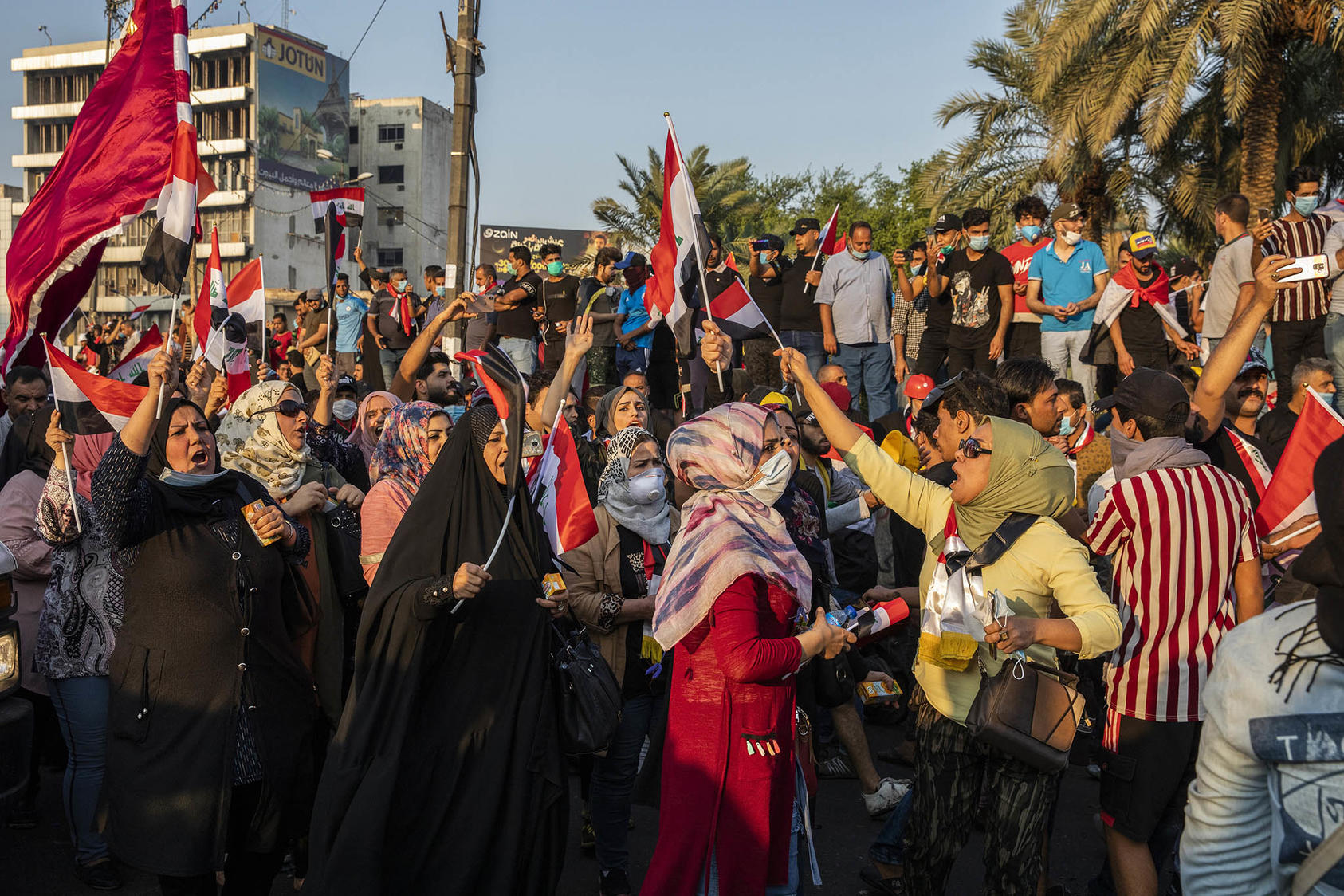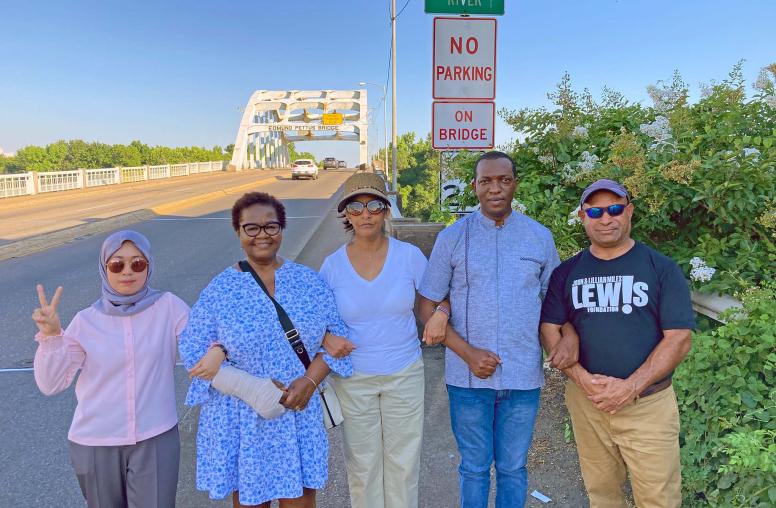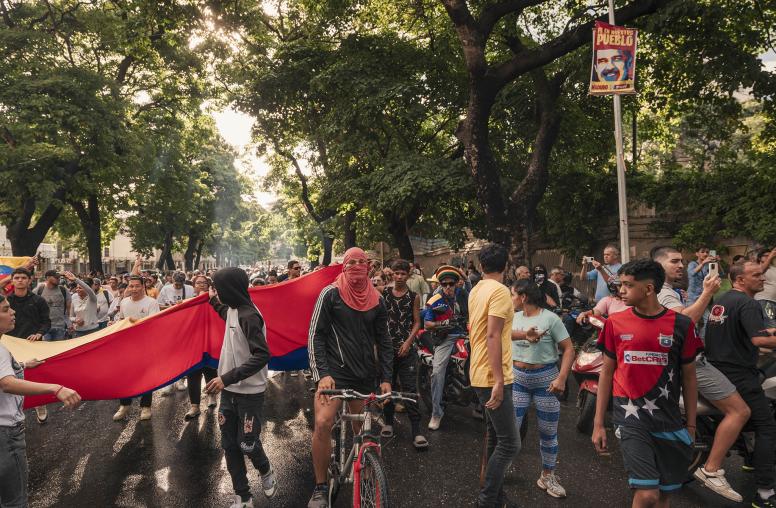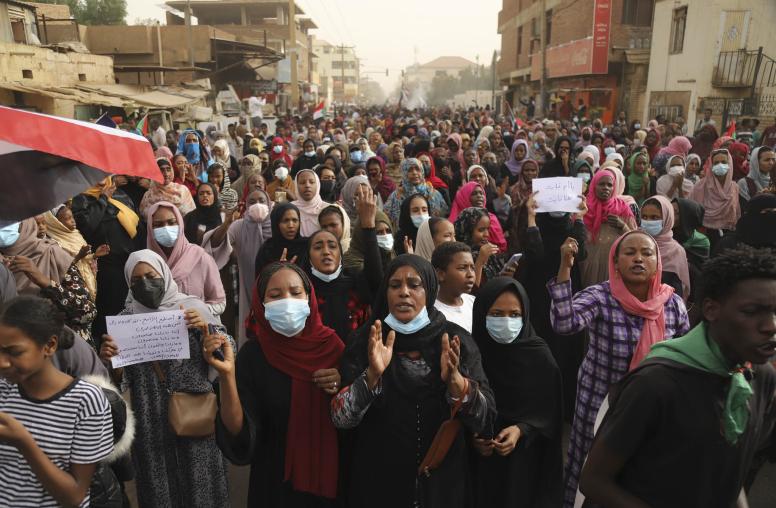Five Myths About Protest Movements
No, they don’t really require charismatic leaders and they can work against brutal dictators.
This year saw protests across the globe, as citizens bridled under what they consider the tyranny of their governments. From Iraq to Zimbabwe, Hong Kong to Chile, demonstrators even in places with ample surveillance and retributive regimes have worked to make their voices heard. But alongside these movements, misconceptions about how they work persist—and plague our understanding of their goals, their methods and their outcomes.

Myth No. 1: Social media has made popular movements more effective.
A dominant theory during the Arab uprisings in 2011 held that the rise of social media would help popular movements. “Through social networking sites, Arab Spring activists have not only gained the power to overthrow powerful dictatorship, but also helped Arab civilians become aware of the underground communities that exist,” said a 2012 article in Mic. A Wall Street Journal story about demonstrations in Sudan this year against Omar Hassan al-Bashir said, “Activists whose street protests precipitated the military overthrow of Sudan’s longtime leader relied on social media.” This year, Iran’s government shut down the Internet in response to mass protests—after slowing it significantly during similar events in 2009 and 2011—and protesters said it damaged their ability to organize. A 2018 Pew Research Center poll found 67 percent of Americans believed that social media was an important tool for “creating sustained movements for social change.”
But while Facebook, Twitter and Instagram have made protesting easier and mobilization faster, social media has not necessarily helped activists build durable organizations or foster long-term planning. These structures were critical to helping the Polish Solidarity movement endure martial law in the early 1980s, and more recently, grass-roots organizing helped the Sudanese popular movement survive violent crackdowns by government forces and paramilitary groups. Movements that lack such attributes are vulnerable.
Myth No. 2: Nonviolent resistance is useless against certain foes.
The Economist argued in 2010 that Mahatma Gandhi and Martin Luther King Jr. were wrong about their emphasis on nonviolence, because “violent protest is actually more effective.” In the Chronicle of Higher Education in 2013, Benjamin Ginsberg wrote, “Those willing to use violence to achieve their goals will generally overcome their less bellicose adversaries.” He noted that in Libya, it wasn’t peaceful protests that toppled Moammar Qaddafi but an armed insurgency backed by NATO airstrikes. The Atlantic even asked if a protest movement could be “too nonviolent.”
But when one of us co-conducted a study in 2011 examining about 330 major violent and nonviolent campaigns targeting incumbent regimes and foreign military occupations, we found that nonviolent efforts were twice as likely to achieve their goals. The majority succeeded against authoritarian governments, when even peaceful protests could have fatal consequences. The ousters of Augusto Pinochet in Chile, Ferdinand Marcos in the Philippines, Zine el-Abidine Ben Ali in Tunisia, Yahya Jammeh in Gambia, Bashir in Sudan and Abdelaziz Bouteflika in Algeria are only a handful of cases in which mass nonviolent force stripped power from despots.
Scholars debate whether violence harms or helps otherwise nonviolent movements. While some argue that limited violence by unarmed civilians (like rioting or rock throwing) could be useful, others maintain that adding such tactics tends to lower participation rates and increase the risk of violent escalation by the regime, resulting in sometimes disastrous consequences for a movement.
What are the other three myths? Find out by visiting the Washington Post, where this article was originally published.


